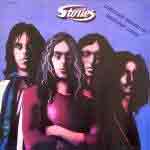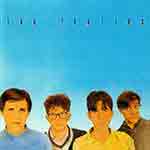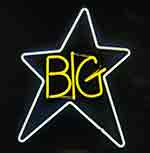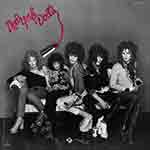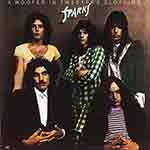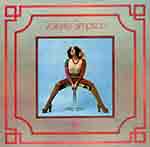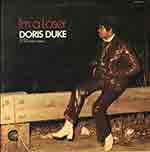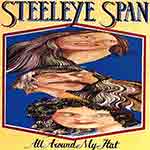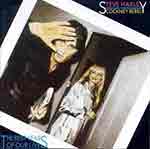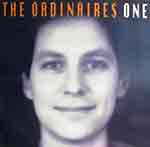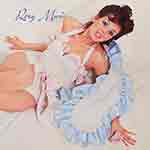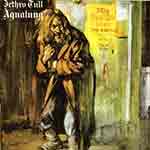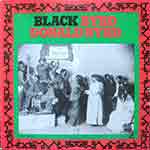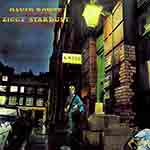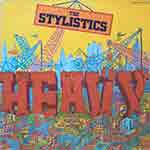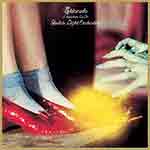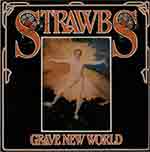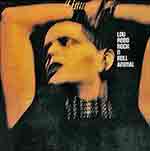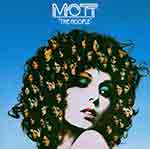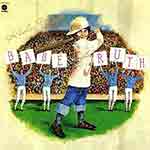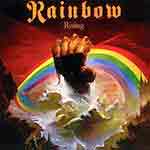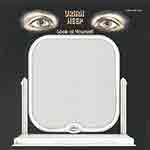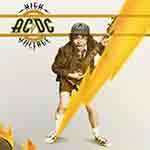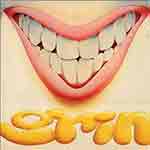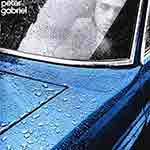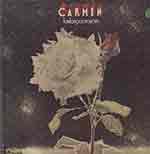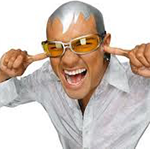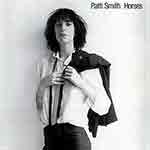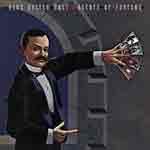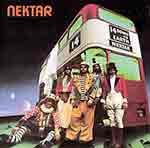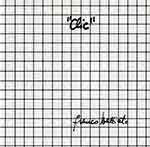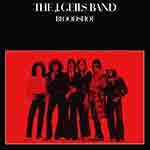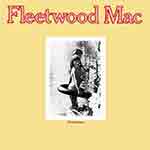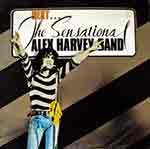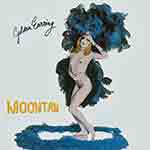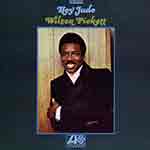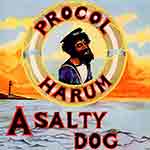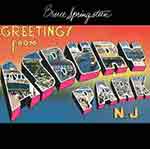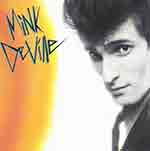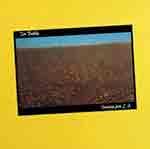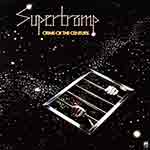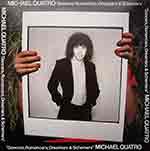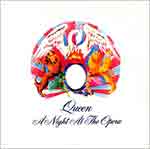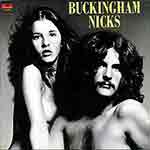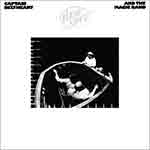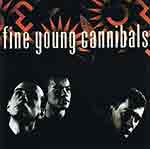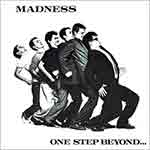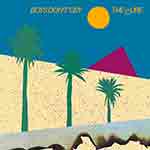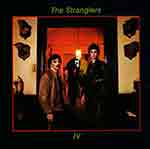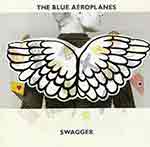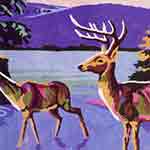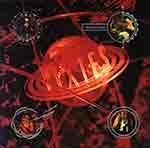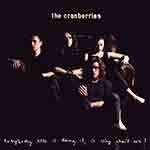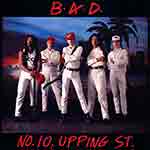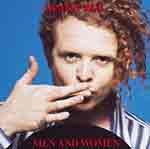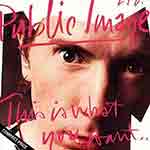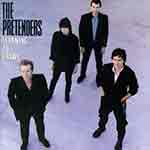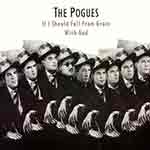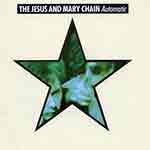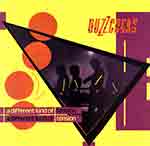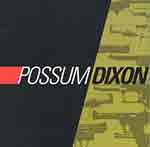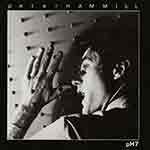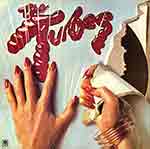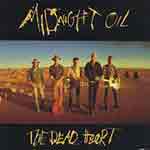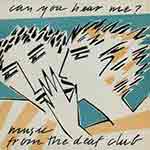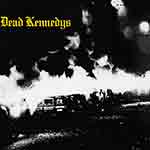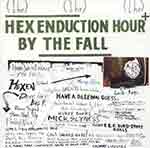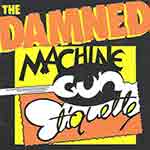
Miscellaneous
Rock of Ages
Confessions of a Concert Junkie
If
concertgoers were awarded frequent-flier miles for attendance at
rock events, I would qualify for several round-the-world
trips.
A few years back, I put together recollections of my New York
(70s) and San Francisco (80s onward) concert outings to share
with work colleagues, most of whom weren’t born in
1972 when David Bowie took the stage as Ziggy Stardust at
Carnegie Hall…or a year later when Lou Reed wrapped a tourniquet
around his arm and sang Heroin at Manhattan’s Academy of Music
(captured live for his Rock n Roll Animal album).
The following is a sampling of events. There’s scant footage on
YouTube from most of the venues, so I include links to
representative concerts or videos from the same era. Where I
couldn’t find videos, I list audio tracks that capture the
sounds. The corresponding album covers are from my vinyl and CD
collections.
New York Concerts
Bitter End
The Bitter End is a Greenwich Village landmark on Bleecker St. with folk roots (Dylan, Baez, and others). It’s outlived many of its peers by booking fledgling rock acts. One of them, circa 70s, was Stories.
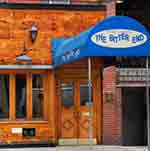
Stories
Stories was a group led by songwriter/keyboardist Michael Brown, a former member of Left Banke (he composed their 60s hit “Walk Away Renee,” bottom link). A Rolling Stone critic dubbed Stories America’s answer to the Beatles—the kiss of death for a rock band. Indeed, Brown left Stories and formed the Beckies, while Stories continued on with vocalist Ian Lloyd (they scored a hit with a cover of “Brother Louie”). You can hear Brown’s influence in samples below from all three bands (I can’t find footage of Stories or Beckies).
Stories:
http://www.youtube.com/watch?v=aCeFWueOVsg
http://www.youtube.com/watch?v=wzZlz_jxp_8
Beckies:
http://www.youtube.com/watch?v=wLeQXGcw5gM
Left Banke:
http://www.youtube.com/watch?v=6uqBTzfcIk4
Max’s Kansas City
Max’s Kansas City on Park Avenue South was a hangout for Andy Warhol during the heyday of the Velvet Underground. I wasn’t part of the scene, though Warhol “superstar” Candy Darling was a friend of a friend and once visited my NY apartment (I played her the Velvet Underground’s “Candy Says”). I have Max’s to thank for two notable concerts—the Feelies and Big Star.
First, here is some rare footage of the upstairs concert space:
http://www.youtube.com/watch?feature=endscreen&v=r0a22CrMf4s&NR=1
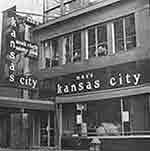
Feelies
Forget Springsteen. The Feelies is a New Jersey band which had a seminal influence on New Wave, punk, and alternative rock. They were barely known east of the Hudson, but a record review caught my eye—and I liked what I heard. The first video captures the group’s driving sound. There’s also a YouTube segment selling the idea of a “Hoboken Sound” (translation: Feelies).
http://www.youtube.com/watch?v=L7EpGVB7-kk
https://www.youtube.com/watch?v=Rs2qLvXVy04
Big Star
The late Alex Chilton, who attained celebrity as the lead singer of the pop band Box Tops, fronted for Big Star. I must have given away a couple dozen copies of “Number One Record,” which I bought for 50¢ at Max’s Record Store (no relation to Max’s Kansas City) in Chelsea. Max stocked cut-out (promotional) albums with holes punched in a corner of the cover. Holes or no, the records today are collectors’ items. Many believe this is the greatest pop band never to have been popular (watch movie trailer below).
http://www.youtube.com/watch?v=Fhy76l7iOOs
Here’s the trailer on a documentary about Big Star:
https://www.youtube.com/watch?v=OFAGUbJPXOI
New York Dolls
The high-heeled Dolls got a lot of bang for the buck from a half-dozen decent songs, but they were a stage act like no other. I’m a huge fan of David Johansen and his alter ego, Buster Poindexter. (I highly recommend the film “New York Doll;” get the DVD, and prepare for a shock after the last credit.) The Dolls were a mainstay of the Mercer Arts Center, but they also took the stage at Max’s, CBGB, and other holes-in-the-wall.
http://www.youtube.com/watch?v=Ct9aBySJkRQ
https://www.youtube.com/watch?v=y-CI1gg2l6w
Bottom Line
The Bottom Line was a Greenwich Village cabaret in the shadow of NYU. That was its death knell—NYU owned and later razed the property. It was a cozy club (think Yoshi’s) that booked moderately-popular rock, soul, and jazz acts—and a few better-known performers: Springsteen once had a week-long stand masquerading as a bar mitzvah band.
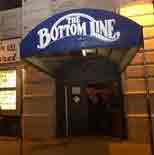
Sparks
The video below captures the Mael brothers—lead singer Russell and keyboardist Ron—exactly as you would have seen and heard them on stage: Russell with the theatrical flair, Ron stone-faced and mustached. The “Woofer in Tweeter’s Clothing” album launched the group, which in turn blazed trails for other art rockers.
https://www.youtube.com/watch?v=QAzESJ62irI&list=PLBE703C3C2F2B379B&index=20
Ashford & Simpson
Valerie Simpson and Nicholas Ashford were the Motown (later Warner) singers/songwriters who wrote big hits for Marvin Gaye, Tammi Terrell, Diana Ross, and the Supremes—“Ain't No Mountain High Enough,” “You're All I Need To Get By,” “Reach Out and Touch (Somebody’s Hand),” “Ain’t Nothing Like the Real Thing,” and others. When Ross got too big for her bridges, Simpson struck out on her own. Then, husband Ashford stepped out from Simpson’s shadow and demanded the credit due him—and the pair performed thereafter as Ashford and Simpson. Note whose name came first—it suggests who crafted the songs.
https://www.youtube.com/watch?v=-chaxk5M-XI
My forays into soul led to discoveries of Apollo artists who seldom ventured south of 125th St.—Jimmy and Vella (like Ashford and Simpson, a husband and wife with Harlem roots), Gloria Jones (who recorded for Motown and should have become its next diva; she was married to T. Rex’s Marc Bolan and had a brief stint with the Commodores), and Doris Duke (not the New York socialite of the same name, but a gritty soul/gospel singer whose “I’m a Loser” album was another staple of my 50¢ record gift-giving).
Steeleye Span
This was a British folk rock band that made a run of it in the early 70s. A friend looking at this was mystified (folk?!). I didn’t tell him that my first concert was Peter, Paul and Mary, before I advanced to Dylan.
Steve Harley and Cockney Rebel
See comments below under Beacon Theater. They performed at the Bottom Line on the back end of a U.S. tour that started as the warm-up act for the Kinks at the Beacon, where they were less than warmly received. They brought down the house at the Bottom Line.
Knitting Factory
I knew the Knitting Factory during its days as a club on Houston St. (pronounced HOUSE-ton in Noo Yawk) on the SOHO/NOHO dividing line. The club later relocated to Tribeca (Triangle Below Canal), and today carries on in nouveau-hip Brooklyn. The tiny Houston St. space was home to an eclectic mix of music (experimental one night, punk the next, klezmer the night after—sometimes all in the same evening).
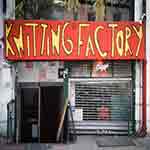
Ordinaires
The Ordinaires were a no-wave band that did a great cover on the Led Zeppelin classic Kasmir.
Madison Square Garden
This blimp hangar is oversized even for viewing a Knicks game. And the sound is even worse than the sightlines.
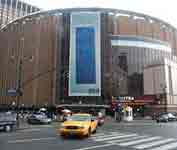
Roxy Music
A friend who worked for a record company’s A&R department (whose job it was to find the next superstar and next big hit) insisted that I catch Roxy Music at Madison Square Garden. He knew I had an aversion for arena concerts, but said Roxy was “like nothing you’ve ever seen or heard.” I’m not sure how they landed a gig at the Garden in their early years (they opened for Jethro Tull), but my friend was right. Bryan Ferry, Brian Eno, Phil Manzanera, and Andy Mackay were a throw-back to the 50s with their sequined outfits and gelled hairstyles, and the music was its own slick thing. This British TV video perfectly captures the look and sound.
Jethro Tull
Jethro Tull was a staple of the Fillmore East and Academy of Music, but Ian Anderson’s minstrel show was lost in the Garden’s lousy acoustics and horrible sightlines.
Village Vanguard
This was your prototypical, smoky jazz club on 7th Ave. in the West Village, akin to the defunct Keystone Korner in North Beach.
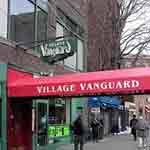
Rahsaan Roland Kirk
I’m not a jazz aficionado, but I appreciated a musician who could play multiple instruments—saxophone, clarinet, flute, harmonica, bells, hand-made contraptions, you name it. Not just play any of them, but play them all at the same time. And, oh yes, he was blind. Not just blind, but he was half-paralyzed from a stroke in his later years—but continued performing and recording.
Carnegie Hall
It was a rare occasion when this hallowed concert hall turned its stage over to a rock or soul group, so I jumped at the opportunity to catch concerts by David Bowie and the Stylistics.
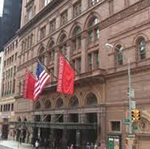
David Bowie
This was the concert of a lifetime—with Bowie and Mick Ronson in full Ziggy Stardust regalia, after release of the namesake album. The Beatles may have broken the generational barrier with their Carnegie concert a few years earlier, but Bowie and Ronson were the gender-benders. “Ziggy Stardust–The Movie” captures the tour, though I don’t believe any of the footage was shot at Carnegie.
Stylistics
The Stylistics were emblematic of the Philadelphia/Thom Bell sound which fueled soul and disco hits from the Spinners, O’Jays, Harold Melvin and the Blue Notes, Blue Magic, etc. Again, this was one of the rare incursions of pop music at Carnegie Hall. The Stylistics broke the color barrier on 57th Street.
Academy of Music
This was my home away from home—a 3,600-seat former movie palace on E.14th street, successor to the Fillmore East after Bill Graham pulled out of Gotham in the 70s. Actually, it was bigger and better than the Fillmore—and had a second life as the Palladium in the 80s/90s, converted by Studio 54’s Steve Rubell and Ian Schrager from theater to combination concert hall/mega nightclub with seven-story tall dance floor and wall-to-wall video and sound. Alas, the property fell into the hands of tone-deaf NYU, which took a wrecking ball to it in the late 90s (a crime on par with the razing of San Francisco’s Fox Theatre, replaced by a not-so-foxy high-rise where I worked). The Palladium was replaced with a soulless dormitory.
There’s scant concert footage from the Academy days, but here’s a glimpse inside the throbbing Palladium:
https://www.youtube.com/watch?v=N8EDo2avdJo
Here’s the theater’s history…
http://en.wikipedia.org/wiki/Palladium_(New_York_City)
Alas, the wrecking ball:
http://cinematreasures.org/theaters/1301/photos/27041
The list of groups and artists who performed at the Academy of Music/Palladium is a Who’s Who of rock ‘n roll—from the Rolling Stones to David Bowie to Bruce Springsteen. My concert-going was during the Academy and early Palladium phase before the orchestra seating was s-moshed and the floors scraped of Coca-Cola syrup and Jujyfruits. Rock mogul Howard Stein presented three or four concerts a week—two shows each night (8 and 11:30), three groups at each show. The best seats in the house were in the loge, which Ticketron at Macy’s put on sale Thursdays for the Friday/Saturday performances. I had the ticket-buying down to a science…until one night when my choice seats for a sold-out show were co-opted by some group’s mixing table. After a dust-up with theater staff, I was relocated to the only empty seat in the rear of the balcony. I was bummed.
Below is a sampling of some of the shows I attended. (For a full accounting, check out Home-Away-from-Home.)
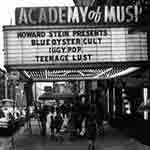
Electric Light Orchestra
I knew ELO from its unadorned beginnings as The Move. I don’t think the amped-up ELO stands the test of time (“Do-Ya” below was a Move original), but the sight and sound of a band with cellos and violins was electrifying.
https://www.youtube.com/watch?v=0CH2AiVbfH0
http://www.youtube.com/watch?v=kuRvumUxMMI
Strawbs
The Strawbs were a British progressive band with a strain of folk (Yes keyboardist Rick Wakeman was a member for several years). The clip below does not do them justice.
Lou Reed
I’ll forever remember the Lou Reed (post-Velvet Underground) concert on December 21, 1973, for two reasons: 1) It was immortalized in a live recording for the Rock n Roll Animal album; and 2) The concert took place on a snowy winter evening after which I had to drive a 1960 VW Beetle in blizzard conditions to New Haven, CT. It’s the only concert I attended that was recorded in full. Due to the snowstorm and pending drive, I was stone sober (everyone else was stoned) and have better recall of the event than any other concert. Like nearly everything else at the Academy of Music, there is no film of the gig, but the video below captures a near-identical performance in Paris and superimposes it on the New York soundtrack. The concert was just as pictured—a three-minute jam before the audience recognized the opening notes of “Sweet Jane,” upon which Reed sauntered onto the stage. I wish there was a recording of Reed’s rendition of “Heroin,” in which he strapped a tourniquet to his arm and mimicked a heroin rush—the music building to a crescendo, then crashing. Reed sang from experience.
Mott the Hoople
Mott the Hoople cashed in with a cover of Sweet Jane and Bowie’s All the Young Dudes (before Bowie performed it himself). Front man Ian Hunter and Mott epitomized the best and worst of glam rock, excesses of which gave rise to the punk scene. (The New York Dolls proved you could have your coke and eat it; see below.)
Babe Ruth
No, I’m not that old. I wasn’t around for the Bambino at Yankee Stadium (Mickey Mantle and Yogi Berra, yes), but I did take in performances by a British band that invoked the Babe’s name. Their big hit was “The Mexican,” which had a second life in the form of a 90s dance mix.
Rainbow
I’m loath to admit it, but there’s a little power metal in my past (a lot if you count punk). I had a liking for Ritchie Blackmore’s Rainbow, though I didn’t care for its forebear, Deep Purple. It has elements of metal and anthem rock that propel Blackmore’s guitar playing and Ronnie James Dio’s matching vocals. Anyway, that’s my story, and I’m sticking to it.
Uriah Heep
Ditto for Uriah Heep. These were hard rockers who exulted in screaming (but not in the soulful way of Little Richard, or the artful way of Muse or Billy Talent). Like Rainbow, Uriah Heep was British, and I was a sucker for anything from across the pond. Besides, how could one resist a record album titled “Look at Yourself” whose cardboard jacket was embossed with a reflective mirror? Good marketing, if not the greatest music.
AC/DC
File this under “heavy bubblegum.” I bore witness to the first incarnation of AC/DC, featuring lead singer Bon Scott—before he drank himself to his grave. Bagpipes, beanies, and knickers, they were pure energy.
Grin (Nils Lofgren)
Before he joined Bruce Springsteen’s E Street Band, guitarist Nils Lofgren had a solo career and fronted his own bands, one of which was Grin (the grinning mouth on the album at left pops open to remove the record). Part of Lofgren’s act was performing somersaults on a trampoline while playing the guitar. It was literally and figuratively a springboard to later success with Springsteen, albeit as second fiddle.
http://www.youtube.com/watch?v=9es5hPLy1J4
http://www.youtube.com/watch?v=-_n_D5An2Gg
Peter Gabriel/Genesis
I got on the Genesis bandwagon late—in its final tour with Gabriel as front man (The Lamb Lies Down on Broadway). Live recordings from other venues come and go on YouTube (gone as I write this). My Genesis listening spans Gabriel’s solo career and Phil Collins’ ascendency. Through thick (nowadays) and thin (them days), I'm onboard with Gabriel.
Carmen
Rock music meets flamenco dancing. I’ll try anything once. Below is a snippet from their act.
Kiss
Kiss made a loud entrance to the Academy of Music as a warm-up act for Fleetwood Mac—cranking up the volume to twice the normal decibel level. There couldn’t be two more mismatched bands. Kiss was one of the worst performances I ever witnessed. Lipstick AND face paint on a pig.
Patti Smith Group
Poetry goes punk. I caught her during her Gloria days, but missed her New Year’s Eve show. And I believe she was the headliner for CBGB’s final curtain call (I called it quits on NY a few years earlier).
Blue Oyster Cult
I never was a big fan of New York’s own Blue Oyster Cult, but “Don’t Fear the Reaper” was worth the price of admission.
Nektar
I took a pass on many of the prog rock megagroups (Pink Floyd, Yes, etc.) in favor of upstarts such as Nektar, a Brit band based in Germany (West Germany, back when), Amon Duual II (Krautrock), PFM (Premiata Forneria Marconi), and Acqua Fragile (anche italiano). Actually, they were all headliners in Europe, introduced to the Big Apple in the midnight hour by Alison Steele, the “Nightbird,” on WNEW-FM, then New York’s cutting-edge rock station (sister to free-form KSAN in San Francisco).
I don’t want to spoil my memories of space-rocker Nektar—there’s nothing online worth a listening. So, from the same time capsule, here’s some hypnotic electronic fare from Franco Battiato.
http://www.youtube.com/watch?v=DlMOsdtD4XU
J. Geils Band
Boston feel-good music. J. (John) Geils, the guitarist, lent his name to the group, but took a back seat to hyperkinetic lead singer, Peter Wolf. Never mind Wolf. The solos by Magic Dick, the harmonica player, stole the shows. The muddy clip below barely captures it, but you’ll get the sense.
Fleetwood Mac
I probably hold the Guinness World Record for attending Fleetwood Mac concerts. And that’s before America’s love fest with Stevie Nicks and Lindsay Buckingham, largely responsible for the group’s mass appeal…and pushback from early followers (including yours truly). I bore witness to the original British blues configuration with lead singer/guitarist Peter Green, singer/slide guitarist Jeremy Spencer, Mick Fleetwood, and John McVie. Green left early on…then Spencer disappeared after a San Francisco concert to join the Children of God, a religious cult (he resurfaced to produce “The Children” LP and fulfill his recording obligations). During the Green–Spencer period, Danny Kirwan came aboard…then Bob Welch…and briefly Bob Weston, who got the boot after having an affair with Mick Fleetwood’s wife. Amidst the changes, Christine Perfect (keyboardist for Chicken Shack) married McVie and joined the band. The group’s marital infidelities are well-chronicled, but the real infidel was Fleetwood Mac’s manager, Clifford Davis, who locked horns with band members and tried to hijack the group’s name. I was at the Academy of Music for a concert the night he foisted a bogus Fleetwood Mac on an unsuspecting audience. From my perch in the loge, I could not recognize any of the band members or songs (the stage was uncommonly dark, they played a series of jams, and there were no vocals). Few in the audience seemed the least bit suspicious—not surprising when you consider the drug of choice those days was Quaalude, a depressant. After a lot of legal wrangling, the group regained the rights to its name, but lost Bob Welch. Enter Buckingham-Nicks, whom I first saw at the Capitol Theater in Passaic, NJ. I knew immediately that this was a pivotal moment. I took in a follow-up concert at the Criterion Theater in East Rockaway, NY (epic event for the sleepy township, near where I grew up). Within a year, Fleetwood Mac was selling out arenas and stadiums—and I bid farewell to them.
This is what the early Fleetwood Mac (Green, Kirwan, Spencer, McVie, Fleetwood) sounded like:
https://www.youtube.com/watch?v=CSQbI_sziAo
Here’s a clip of Welch (post-Fleetwood Mac) joined by Christine McVie and Mick Fleetwood:
https://www.youtube.com/watch?v=cjH84W_-V1c
A little Americana: Dick Clark (1929–2012) interviews Bob Welch (1945–2012):
http://www.youtube.com/watch?v=nZIgHEnC5qY&feature=fvwp&NR=1
Sensational Alex Harvey Band
I couldn’t remember what made them so sensational—just that there were quirky and good theater—but this clip reminds me that it was more than showmanship.
Golden Earring
Forget Radar Love, the hit that many associate with Golden Earring. The group’s body of work is far broader and better. The golden rule about the Golden Earring: Get past lead singer Barry Hay’s monochromatic intros (lead guitarist George Kooymans has a better voice) and allow the songs to build and Hays to get in tune. The Dutch band predates the Rolling Stones—and is still performing.
https://www.youtube.com/watch?v=G-Jco-RMgDw/a>
https://www.youtube.com/watch?v=xHFjOCj2Dz0
http://www.youtube.com/watch?v=q3n7QwEbRwc
Wilson Pickett
My Wilson Pickett LPs did not make the trek from New York to San Francisco. All my possessions had to fit into a VW Bus, including a dog in the front seat and a mattress on the roof, so I bestowed two-thirds of my record collection to a friend. Lucky friend: Pickett ranks up there with Marvin Gaye (whose LPs did make the journey) and other soul masters. I was among about 200 honkies who took in Pickett’s appearance at the Academy of Music—a soulful anomaly from the usual rock fare. Empty theater or no, Pickett didn’t want to get off the stage—and even pulled the closed curtains open to force an encore. I think there were 50 of us who remained to see it.
Fillmore East
Face it, I missed the boat with the Fillmore East (I later paid my dues to Bill Graham in San Francisco at the Warfield, Old Waldorf, and Wolfgang’s). I wasn’t onboard for the likes of Jefferson Airplane, Santana or Elton John, had no interest in the Grateful Dead, and had little appreciation for Humble Pie or Hot Tuna—all staples of the Graham venue. I did score big-time with Captain Beefheart (see Boarding House squib below) and Procol Harum.
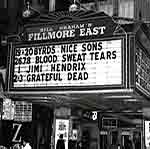
Procol Harum
I’m a sucker for anthem rock. Procol Harum hit the ground running with “A Whiter Shade of Pale.” The big attraction for me was the organ-playing of Mathew Fisher.
http://www.youtube.com/watch?v=Q6BzNEZxbiw
Here’s a solo taste of Mathew Fisher:
http://www.youtube.com/watch?v=YRkV1rTUvJk
My Father’s Place—Roslyn, NY
Buried somewhere in my closet is a bootleg tape (from a Sony Walkman) that I made at an early Bruce Springsteen concert at My Father’s Place, a Long Island cabaret (French for shithole). The one-time bowling alley in the sleepy bedroom community attracted the likes of Springsteen, Billy Joel, Bob Marley, Tom Waits, Tom Petty, The Police, and Lou Reed...and the price of admission was less than a round-trip to the Big Apple on the Long Island Railroad!
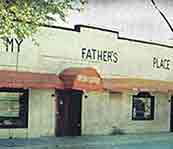
Bruce Springsteen
The 1973 concert began with Springsteen standing with his back to the audience on a darkened stage while the band (David Sancious on keyboards) tuned its instruments. Suddenly, all the disparate sounds became one, the lights came on, Springsteen spun around, and the band launched into 4th of July, Asbury Park (Sandy). I wasn't the only bootlegger—a radio broadcast of the show made its way onto a pirate CD.
This is around that period:
https://www.youtube.com/watch?v=f_lSDQy03LY
This is a video from '85 that showcases E Street/Grin member Nils Lofgren outdueling Springsteen on guitar: http://www.youtube.com/watch?v=i8JcWD1rHVo
CBGB
Who would’ve thunk a punk club would fuel the Bowery’s renaissance? I remember when it was Skid Row and the Amato Opera was the musical draw. Friends of mine live a block away. The once desolate streets now are chock-a-block with restaurants, bars, and clubs. Alas, they helped push out CBGB.
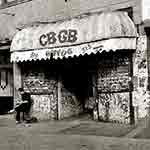
Mink DeVille
Even by CBGB standards, Willy DeVille was edgy, albeit more soulful than most of the punk club’s fare (Ramones, Television, Blondie, etc.).
Wollman Rink/Central Park
The outdoor Wollman ice-skating rink in Central Park moonlighted as a venue for the Schaefer Music Festival. The sponsor, F.M. Schaefer Brewing Co. of Brooklyn, is long gone, and so are concerts in the park. Donald Trump wrested control of Wollman, rebranded it the Trump Wollman Skating Rink, and told the musicians you’re fired.
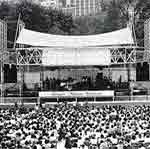
Tim Buckley
Tim Buckley’s singing is an acquired taste—love it or hate it. Heroin also is an acquired taste. Buckley loved it, and he’s no longer with us. I saw him at Wollman a year before he OD’ed.
Beacon Theatre
Never mind Lincoln Center. The Beacon a few blocks north is the most lavish theater on the Upper West Side—a pastiche of Greek, Roman, Renaissance, Rococo and Moorish styles. The beautifully restored movie palace, which vied with the Palladium for rock acts, is still going strong with a mix of concerts and musical theater. If you watched the Tony Awards in 2011, 2012 or 2016, you had a birds-eye view of the interior.
![]()
Cockney Rebel
Steve Harley and Cockney Rebel were the toast of London, topping the charts in England before they journeyed to the US. They debuted in New York as a warm-up to rock icon Ray Davies and the Kinks, but were booed off the stage by the Kinks’ cult audience. At the end of the US tour, Cockney Rebel returned to New York to headline the smaller Bottom Line, playing to its own worshipful followers. To the chagrin of the band, Harley, who did not lack for ego, announced that a couple of his band mates were new. “If you think these guys are good,” he said, “you should have heard the original band.”
Cockney Rebel back then:
https://www.youtube.com/watch?v=dAoaVU3-ve0
…Later on:
http://www.youtube.com/watch?v=_qMdITBvLGQ
…In between, with Sarah Brightman in Phantom of the Opera:
https://www.youtube.com/watch?v=G2zxzaWgVRA
Supertramp
I had a friend whose musical tastes mirrored mine, but who couldn’t afford to buy many records. He owned a reel-to-reel tape recorder, however, and borrowed albums from friends to build a rock collection that trumped any I’ve ever known. That may have changed after I left NY: He’s the fellow who inherited the bulk of my records.
One of the groups he turned me on to was Supertramp.
https://www.youtube.com/watch?v=dNcscJ8VBKo
Michael Quatro
Same concert where Cockney Rebel opened for the Kinks, Michael Quatro was the warm-up for Cockney Rebel. It was the East Coast debut for the Detroit rocker, who was overshadowed by his rock star sister, Suzi Quatro. Michael was the Bach of Rock, utilizing organ, electric piano, moog synthesizer, and other wired gizmos for rock interpretations of Bach, Chopin, and Rachmaninoff.
Queen
Freddy Mercury was always over the top and Queen’s music was overly grand for my tastes, but God save the queen. The video below captures a performance at London’s Hammersmith Odeon in '75, about the time I saw them at the comparably sized Beacon. The Hammersmith is still going strong—rechristened Eventim Apollo. People would kill today—probably then, though I don’t remember any blood on my hands—to see the likes of Queen in close quarters.
https://www.youtube.com/watch?v=M-9ERM0Jr4U
Queen is one of the few groups that improved with age:http://www.youtube.com/watch?v=NuxS-9t3tnY
Capitol Theatre—Passaic, NJ
Porn movie house by day, rock theater by night, the Capitol in Passaic NJ was a run-down theater in a run-down town. All the 3,000 or so seats were on one level the length of a football field, but the sound and lighting were as good as anything New York had to offer. The promoter was John Scher, who also ran concerts at the Meadowlands Stadium (home to football’s NY Giants) and other venues east and west of the Hudson.
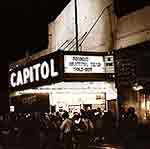
Fleetwood Mac, Take Two
Mark the year: 1975. That’s when Fleetwood Mac emerged from legal limbo (see above) and basked in the glow of Lindsay Buckingham and Stevie Nicks. The first NY area appearance was at the Capitol Theater, hence my foray to Passaic.
Here's footage from that concert:
https://www.youtube.com/watch?v=_fEqyo8KS_A
And here’s a taste of Buckingham-Nicks before joining Big Mac.
San Francisco Concerts
Boarding House
This was my first encounter with SF’s music scene. The small music and comedy club on Bush near Taylor was a stopping point for some big names (Steve Martin recorded an album there). KSAN was a heavy promoter of the shows, often hosted by DJ Terry McGovern, who did comedy gigs of his own.
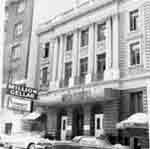
Captain Beefheart
Words are not adequate to describe Captain Beefheart (Don Van Vliet) and the cast of musicians known as the Magic Band—you had to experience it. Frank Zappa produced several of his albums, which says a thing or two about the idiosyncratic vocals and rhythms. The clip below speaks for itself.
Kabuki Theatre
Before it was chopped up into an AMC bento box (now the Sundance Cinema), the Kabuki Theatre in Japan Center was a single auditorium for kabuki dance theater, with large center stage and two smaller side stages. When neighboring Winterland bit the dust, Bill Graham co-opted the Kabuki to stage mid-sized rock concerts. It was short-lived with the resurrection of the Fillmore and the emergence of the Warfield.
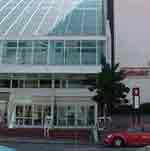
Fine Young Cannibals
Fine Young Cannibals are the gift that stopped giving. Lead singer Roland Gift was the second coming of Otis Redding, but left the music scene to chase a movie career with “Sammy and Rosie Get Laid.” Sam and Rose got laid, and rock fans got screwed. The Fine Young Cannibals also included two former members of the English Beat, who added a jolt of punk and ska.
https://www.youtube.com/watch?v=HgPzyk3_m1U
http://www.youtube.com/watch?v=Q2aha4uEpEQ
https://www.youtube.com/watch?v=OCnc9Ql_o5U
Madness
Madness rode the wave of British 2-tone ska bands. One Step Beyond is their signature song. You’re probably familiar with it, but the Italian version?
In inglese: https://www.youtube.com/watch?v=M02572lQTJg
In italiano: http://www.youtube.com/watch?v=zxSaT3adn20
Greek Theatre
You can’t beat watching rock stars under the stars at the Greek—so long as you dress like an onion and bring blankets or cushions for the concrete seats. If the Coliseum setting doesn’t get you high, the leafy second-hand smoke will.
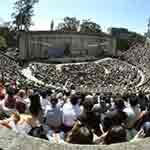
The Cure
The Cure’s synth/goth sound and Robert Smith’s strangulated vocals are made for arenas. Great view of the stage: I could see Smith’s eye shadow in the dark of night. The concert was equal parts pop (from Boys Don’t Cry to Kiss Me, Kiss Me) and angst (from the dark trilogy albums). I wouldn’t have enjoyed it had it been all doom and gloom.
https://www.youtube.com/watch?v=ionEx65936E
http://www.youtube.com/watch?v=qy22YrRCWww
Old Waldorf
The space now occupied by the Punch Line in Embarcadero Center housed the Old Waldorf, a rock club the dimensions of Slim’s. It was one of several venues where I saw the Stranglers, my favorite rock group in the late 70s/early 80s.
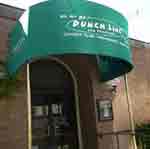
Stranglers
The Stranglers were the punk equivalent of the Doors, with Hammond organ (heresy for a punk band) and, for a couple of tours, a horn section (grounds for excommunication). Forget the Hammond and the horns—the Stranglers had cojones. They made it to the U.S. before the Sex Pistols, and lived to tell about it. Aquarius Records, then located on Castro St., plastered its window with Stranglers album covers (the storefront was recreated for the film “Milk”). I attended every San Francisco concert until lead singer Hugh Cornwall quit the band. A concert at Slim’s featured Cornwall’s sub-par replacement. They still perform today—making a mockery of good memories.
The first Nice ’n Sleazy cut below is a G-rated version of the song. If you’re so inclined, the second is a whip-roaring, R-rated performance in London’s Battersea Park (the video is cat-and-mouse with the YouTube censors; search for “Stranglers Battersea Park Nice 'n' Sleazy”). Cornwall was noted for his wise-ass exchanges with audiences. In San Francisco, he chewed out the locals for allowing KSAN to go playlist. KSAN at that time was a freewheeling rock station which let DJs play any music they liked and whose news department broadcast weekly dope reports. A British punk group had to break the news.
http://www.youtube.com/watch?v=OYqllpnyWrY
http://www.youtube.com/watch?v=Rxc9A6Hy
https://www.youtube.com/watch?v=w4-XFkLJDdQ
https://www.youtube.com/watch?v=nJINoq94gTE
http://www.youtube.com/watch?v=cy9-epdDw9E
Slim’s
I’ll bet owner Boz Scaggs’ living room is bigger than his club. The best thing about Slim’s is that you’re never far from the stage. Worst thing: The columns holding up the structure can block your view of the stage.
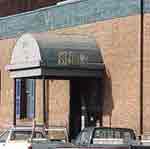
Blue Aeroplanes
Music critics have a hard time categorizing this British band, which then and now flies under the radar. Start with the fact that the lead singer is a poet who sings/recites his verses. Add to that, one of the band members is a classically trained dancer (plays no instrument, doesn’t sing…just dances). Through it all, there’s the sound of slashing guitars, which makes for some incredible live performances.
Side note: When I worked in Berkeley, vandals made off with my car stereo. I didn’t care about the stereo, but I was furious that they had taken the CD in the stereo—Blue Aeroplanes’ “Swagger” album. It took a full year to find a replacement. I looked for it online and in every record store from San Francisco to New York. I was ready to pay a king’s ransom, when a friend tracked down a copy at a store in LA. I believe it cost $7, less than I paid for the stolen CD.
http://www.youtube.com/watch?v=GBt6r6zKp4M
http://www.youtube.com/watch?v=HPOVbu-wBzs
http://www.youtube.com/watch?v=aoE8WQcbOIU
I-Beam
Forget Haight-Ashbury. The epicenter of music on Haight St. in the 70s/80s/early 90s was Haight-Cole. I arrived in San Francisco about the time the Straight Theater (Grateful Dead, Big Brother and the Holding Company, etc.) at the corner of Cole was bulldozed, but the scene shifted to the I-Beam a few doors down—a gay disco that evolved into a cutting-edge concert space for gay, straight, bi, unknown, and undifferentiated rockers. Its “New Music Mondays” featured the likes of Pearl Jam, Smashing Pumpkins, Soundgarden, Sonic Youth, Red Hot Chili Peppers, et al. Across the street was Rock ‘n Bowl (a.k.a. Park Bowl), where you could throw strikes while Michael Jackson moon-walked on the “scoring” screens (the vibe lives on with Amoeba Music). Down the block was Nightbreak, a small pub that presented indie bands.

Voice Farm
It’s a coin toss between The Tubes and Voice Farm as to which is the all-time weirdest San Francisco band. Voice Farm’s formula was techno-pop and low-tech theatrics. The stage curtain was a bed sheet, the able-bodied lead singer entered the stage on a motorized wheelchair, and the Oblong Rhonda dancers suited up in bras and BVDs, or both. I’m not kidding—it’s captured in the video below (filmed at The Edge in Palo Alto, another 80s hangout):
http://www.youtube.com/watch?v=Tyl8oVlost8
http://www.youtube.com/watch?v=YJ2W2-EV0bM
Warfield
The more awesome the theater, the sketchier the neighborhood. Welcome to the Tenderloin, ground zero for the Warfield. More than just a grand old movie house, the Warfield has its roots in both film and stage (vaudeville). As a rock venue, it spans the generations: the Millennials from Milpitas thrash in the mosh pit, the Gen Xers stand a level above them, and meek souls like me take refuge in the balcony seats. The balcony offers an unimpeded view of the stage, but bring your earplugs: the over-amplified speakers are dead ahead.
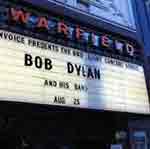
Pixies
Pixies, Black Francis/Frank Black, Kim Deal, The Breeders—I’ll take them piecemeal or as Pixies. They get my nod as the standout band (and best disbanded band) of the 90s, and they still had it together when they reunited in 2004/05 and played the Fillmore. The group has a lot of baggage—the “Pixies Sell Out” DVD captures the reunion tour—and Black Francis displays most of it on his waistline.
http://www.youtube.com/watch?v=Sd5XUYfLYn0
http://www.youtube.com/watch?v=NZl_Ye3TKaI
Cranberries
They appeared on same the bill with fellow alt rockers Suede. Both bands were fast out of the gate in early 90s, but the Cranberries made it to the finish line. I recall lead singer Dolores O’Riordan breaking into an Irish jig for one song, though it wasn’t to Zombie, which had a second life as a techno remix.
https://www.youtube.com/watch?v=HN_9f8SXhh0
http://www.youtube.com/watch?v=llZM5hCvHGw
Big Audio Dynamite
I didn’t catch the Clash, but I caught Mick Jones’ second act—Big Audio Dynamite. I think the Clash was overrated, and B.A.D. was overproduced. But I liked the mix of rock and reggae, and their use of samplings.
Simply Red
Simply put, Simply Red is blue-eyed, red-headed soul. Soothing rock, with braids and curls. I stand accused of owning several CDs and paying to see them.
Public Image Limited
No apologies needed for John Lydon, a.k.a. Johnny Rotten. San Francisco’s Winterland had the dubious distinction of hosting the final concert of the Sex Pistols (the third video below aptly captures Pistol Lydon at Winterland singing “No Fun”). The group and the former ice rink had their meltdowns before most of my SF rock-going, but Lydon later returned to the Warfield with P.I.L. He was his manic self, as portrayed below.
https://www.youtube.com/watch?v=psTAei3HE9c
https://www.youtube.com/watch?v=9BGi8u8BtaA
https://www.youtube.com/watch?v=3K3uAlyNL5o&list=RD3K3uAlyNL5o
Reborn Sex Pistols, reenergized Lydon in '96:
https://www.youtube.com/watch?v=3OB6qkLnc8E
Pretenders
The concert followed the Pretenders regrouping after drugs did in two of the original band members. The song below symbolized the band’s reemergence.
Fillmore
The Fillmore is more than a concert hall—it’s a museum. The posters of bands come and gone are worth the price of admission.
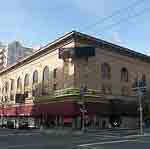
Pogues
I’m going to break form here and include a link to a 2012 performance by Shane MacGowan and the Pogues. I usually cringe at the sight of aging rockers (I’m one) mouthing songs with sagging jowls (a rolling stone does gather moss), but MacGowan was old before his time. That he’s still alive and able to take the stage is a feat unto itself (the Pogues played a four-night stand at the Fillmore a few years back). MacGowan was temporarily booted from the group in the 90s because of his fondness for whiskey—more than needed to perform Celtic drinking songs. You never knew if he’d show up for a concert—or throw up during it. I’ve seen the Pogues with and without MacGowan (Joe Strommer of the Clash was a fill-in), and MacGowan without the Pogues under banner of the “Popes.” I’m a little murky on which I saw where (Fillmore, Kabuki, Warfield), but I’m sure MacGowan’s memory is just as foggy.
Side note: There’s a warm-hearted DVD on MacGowan’s battle with the bottle, “The Shane MacGowan Story: If I Should Fall from Grace” (title borrowed from the album).
Young: https://www.youtube.com/watch?v=WmFHeb_7yY4
…and old: https://www.youtube.com/watch?v=qG2xwwpWwZU
Jesus and Mary Chain
This concert is frozen in my memory. Actually, it was the band that was frozen—standing like statues for 10 minutes at the start of the concert because their drum machine didn’t work (they later added a drummer). Jesus and Mary, a.k.a. brothers Jim and William, could not be accused of idle patter.
Buzzcocks/Billy Talent
I caught up with them 10 years too late. The early period straddled my New York and San Francisco years, and the British punkers had lost their buzz by the 90s. They were upstaged by the edgy Canadian warm-up, Billy Talent.
Early Buzzcocks: http://www.youtube.com/watch?v=Q4tP-Ybj13U
Later: http://www.youtube.com/watch?v=ullIOdyVp0E
Billy Talent: http://www.youtube.com/watch?v=lvqho8QRNCE
Just for the heck of it, here’s the Fine Young Cannibals’ treatment of Ever Fallen in Love:
https://youtu.be/lcD6hsiAW60?t=1220
Kilowatt
This hole-in-the-wall on 16th St., near Mondo Valencia, occasionally lends its space to local bands.
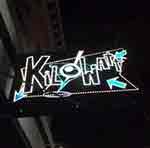
Possum Dixon
Not long after opening for the Lemonheads at the Fillmore, Possum Dixon took center stage (if you can call a platform a stage) at Kilowatt. The group’s front man was Rob Zabrecky, better known for his magic act than his music. The Kilowatt gig was magical—like a concert in one’s living room.
Wolfgang’s
The empire known as Bill Graham Presents (Fillmore West, Fillmore East, Winterland, Warfield, Kabuki, Old Waldorf, Civic Auditorium, Cow Palace, Shoreline) also ran this low-ceiling, high-energy club on Columbus Ave.
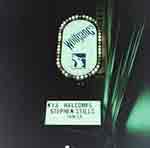
Van der Graaf Generator/Peter Hammill
Peter Hammill (not to be confused with journalist/novelist Pete Hamill) was the driving force behind the jazz/rock/operatic/improvisational Brit band Van der Graaf Generator (think King Crimson on steroids). Hammill’s gig at Wolfgang’s was an unplugged—more like unhinged—solo appearance.
Bimbo’s 365
Bimbo’s is a step-back in time. It’s a great place for a concert, when it’s not rented for a bar mitzvah reception.
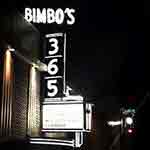
The Tubes
I’d like to put this out of my memory, but my introduction to Bimbo’s was a Tubes concert shortly after moving here. The Tubes were the darlings of San Francisco for their stage antics, satirizing politics and pop culture. I found them to be a parody of themselves—and musically deficient, as evidenced by the video below (shot at Bimbo’s). I did invest in one of their albums, so I was an enabler.
Bill Graham Civic Auditorium
This multi-purpose auditorium is a containable size for arena rock, though it’s better suited for a tennis match (I saw the SF debut of Venus Williams in the Bank of the West Classic). Note: The building sits on top of Brooks Hall, an underground, pre-Moscone convention venue that was declared seismically unfit after the Loma Prieta earthquake. Shake, rattle and roll.
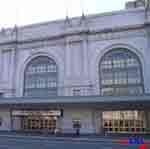
Midnight Oil
The bald truth (pun intended) is that skinhead Peter Garrett appeals to my alt rock and political sensibilities…and is a great showman. Since I’m waxing political, one of the best bands I’ve seen in a long time was at an Obama rally at Civic Auditorium. I can’t tell you the group’s name, because I was stuck in a line getting a beer when they were introduced. Lousy bar service, but the place baracked.
Mabuhay Gardens
Broadway between Kearny and Montgomery was the crossroads of San Francisco punk culture. I tiptoed around the scene: I was more passerby than participant. It was the music that mattered. The Mabuhay Gardens was ground zero—a Filipino super club that served up chicken adobo with a side order of Mutants, Dead Kennedys, Avengers, and Nuns.
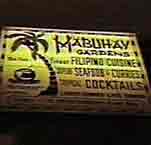
The Offs
The Offs shared the Dead Kennedys manager and a little of their bluster, but their blend of punk and reggae stood apart from the nihilist, smash-mouth DKs. I don’t have their one-and-only LP, but the cut below is on compilation albums that I own, “415 Music” (a double entendre: 415 is both area code for San Francisco and the California penal code for disturbing the peace) and “Deaf Club: Can You Hear Me?” The aptly-named club was on Valencia St., when burritos were king.
On Broadway
When the Mab slammed the door on punk rock, the scene quietly (actually, noisily) moved down the block to the larger On Broadway theater. The introductory comments on the second YouTube video below give a good overview of San Francisco’s shifting punk scene.
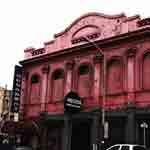
Dead Kennedys
My night started at the San Francisco Opera where a buddy and I saw a three-hour Wagner opera, then hopped a cab to Broadway to catch the Dead Kennedys. I wore my black Thrift Town jacket and skinny tie—a little underdressed for the opera, overkill for the On Broadway. We cowered in the corner of the bar area so as not to provoke the ire of the hardcore DK throng. Damn right, we were intimidated…and the video below shows why:
http://www.youtube.com/watch?v=Wo0Cjlu6PlQ&feature=relmfu
The closing show at the On Broadway was recorded for a full-length documentary. The opening number captures the pox-on-politicians sentiment, with Jello Biafra dedicating the song to the mayor, “Diane banker-butt Margaret Thatcher the Dragon Lady with no heart Feinstein.”
The Stone
I was more enamored of British punk than the Yankee variety. I only had to go across the street to The Stone, a stopping point for Brit bands. Not unlike the I-Beam, The Stone showcased indie and under¬exposed groups.
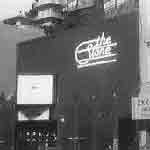
The Fall
The Fall’s music is a Rorschach test. Behind the noise and distortion is a song. The amazing thing is that they could replicate the songs in concert.
The long (studio):
http://www.youtube.com/watch?v=cu2UbJZyQcI
...and short (live):
http://www.youtube.com/watch?v=pKJPEAmuaT4
The Damned
This concert marked the return of guitarist/lead singer Captain Sensible, one of the band’s founding members, but the departure of co-founder and drummer, Rat Scabies (I didn’t make these names up). Ask yourself: If you could only have three of the Fab Four, would you rather have John Lennon or Ringo Starr?
Epilogue
Video killed the radio star…and computers killed most of my concert-going and record-buying. In the late 80s, I developed a computer habit. I hopped aboard the digital bandwagon to start a bulletin board system (BBS), a forerunner of the Internet. The enterprise, called GUIDEBOARD, was a message board and guide to San Francisco—the Craigslist and Yelp of its day.
GUIDEBOARD consumed most of my spare time and drained most of my resources. Instead of concerts, I spent my money on computers. Instead of CDs and records, I bought USRobotics modems. The phone bills were monstrous.
I had less money for music, but I was a rock star in a one-man band.

